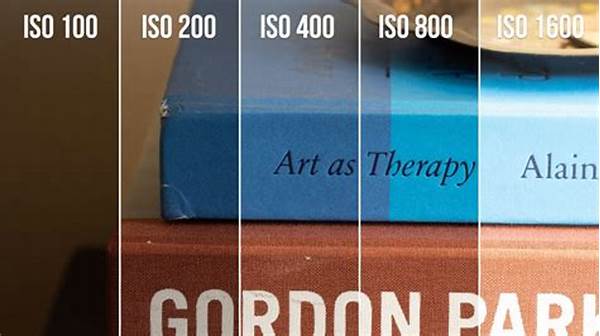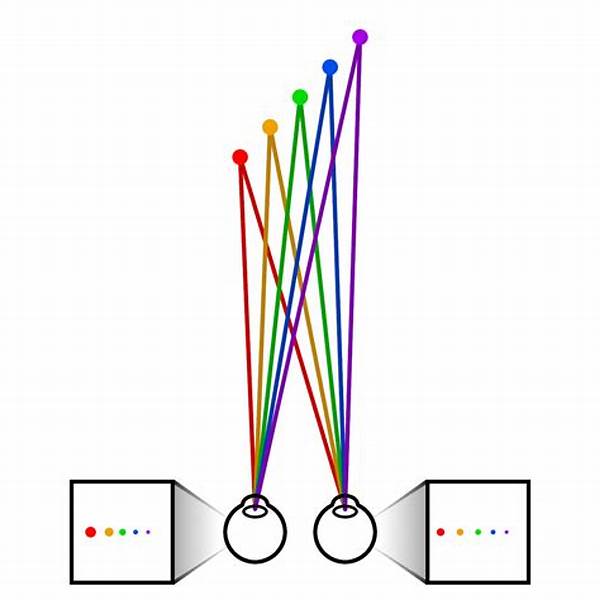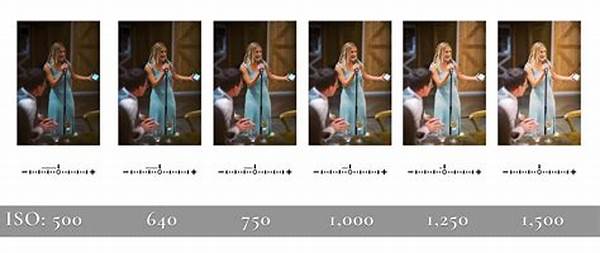Hey there, photography enthusiasts! Have you ever snapped a picture, only to realize it looks more like an abstract painting of noise rather than the stunning, sharp image you had envisioned? Well, that right there is the sneak attack of ISO on your picture detail. Whether you’re a newbie photographer trying to grasp the basic settings or a seasoned pro facing the eternal ISO dilemma, understanding how ISO impacts picture detail is crucial. Let’s dive into this topic, keeping it casual and straightforward!
Read Now : High-resolution Stock Photos For Free
Understanding the Influence of ISO on Picture Quality
So, what’s the deal with ISO and picture detail anyway? Buckle up, because we’re about to break it down. ISO, as you might know, is part of the holy trinity of camera settings alongside aperture and shutter speed. When you crank up the ISO, your camera becomes more sensitive to light. This might sound like a magic trick for low-light conditions, but beware! The impact of ISO on picture detail is not always favorable. Higher ISO settings often introduce digital noise, which can steal the sharpness and clarity from your images faster than a thief in the night. Imagine you’re at a dimly lit concert, capturing the electrifying vibe with your camera. The temptation is real to push the ISO to catch those moments. However, this could mean sacrificing that crisp detail for a grainy effect that looks more like a funky Instagram filter than the actual scene.
Sure, bumping the ISO is necessary sometimes, especially when you don’t have a tripod and the lighting’s lower than your coffee supply on a Monday morning. But understanding how far you can push it without losing essential details is the key to mastering your shots. Some cameras handle high ISO levels better, offering cleaner images with less grain. Exploring your camera’s performance in various ISO settings and lighting conditions is like training a puppy—it takes patience, trial, and of course, some treats, aka great shots!
Balancing ISO for Perfect Details
Finding that sweet spot where ISO helps rather than hinders detail is an art in itself. The impact of ISO on picture detail can either make or break your photo. Aim for a balance that makes your subjects pop without them drowning in digital noise. Mastering this balance will elevate your photography game!
Experimenting with ISO is not about going all out on either end of the scale. It’s about learning your equipment’s capabilities and limitations. The impact of ISO on picture detail depends significantly on this understanding. So, keep snapping and adjusting!
Ever wondered why professional photographers manage to get those jaw-dropping shots? Yes, part of it is experience, but knowing how to manage the impact of ISO on picture detail is a significant part of that expertise. It’s about making deliberate choices.
Next time you edit your photos, zoom in and analyze how different ISO settings have impacted the sharpness and clarity. Recognizing the impact of ISO on picture detail can improve your editing process, giving you a much-needed edge.
Instead of mastering all photography concepts at once, focus on ISO and its effects. The impact of ISO on picture detail once fully understood, will boost your confidence and creativity, making you a more intentional photographer.
ISO Settings: Friend or Foe?
So, what’s the word? Is the ISO setting a friend or foe when it comes to your photography journey? The impact of ISO on picture detail is a double-edged sword. On one side, it gives you flexibility in various lighting conditions; on the other, it compromises quality if not handled with care. Let’s talk about turning ISO into a valuable ally. When you shoot in manual mode, adjusting ISO needs some serious consideration, just like choosing toppings for your pizza—each choice changes the outcome. Sticking to lower ISO settings generally provides the best picture detail, ensuring your images remain sharp and rich with detail. However, don’t shy away from higher ISO when necessary; it’s all about making the right call at the right moment.
Remember, on a bright sunny day in the park, you might keep your ISO low, letting natural light do its magic. But during an indoor event with less than optimal lighting, slightly higher ISO settings may be necessary to keep your pictures from turning into dark mysteries no one can decipher. Getting comfortable with ISO is like dancing; it’s about rhythm and flow. The more you experiment with it, the better you’ll get at anticipating how different settings will impact picture detail. Practice is key—test different scenarios, tweak settings, and soon enough, your ISO know-how will be flexing just like your favorite playlist at the gym.
ISO in Low Light Situations
Low light? High stakes! The most challenging yet rewarding scenarios for photographers are those with less-than-ideal lighting. Think nighttime shots, cozy indoor parties, or a dimly lit art gallery. Here, the impact of ISO on picture detail becomes strikingly apparent. For those dark environments, a higher ISO can save the situation, but at what cost? High ISO can lead to grainy or noisy images – definitely a hit to those fine picture details. So what’s a photographer to do? Consider cranking up ISO as a last resort after trying slower shutter speeds and wider apertures first. Balancing these elements could help retain more detail while keeping noise at bay.
Be mindful though, every camera body has a different threshold for optimal ISO performance. Familiarizing yourself with your camera’s limits will drastically improve your results when shooting in low-light conditions. Whether you’re capturing the enigmatic allure of a city at night or a family gathering over candlelight, understanding the interplay of ISO and picture detail is crucial for flawless shots. Plus, post-processing can rescue some of those noisy images, but having a clean shot from the get-go is always better. So grab your camera, dive into these settings, and let the light (or lack thereof) guide your photographic heart!
ISO and the Quest for Sharpness
Here’s the honest scoop: the quest for sharpness in photography is often hampered by reckless ISO settings. If you’ve ever delved into the realm of post-processing, trying to remedy a photo that looks like it was taken through a misty morning lens, you know the impact of ISO on picture detail matters. When it comes to achieving razor-sharp images, the perfect ISO setting plays a pivotal role. But, achieving sharpness is also about balance. While it’s tempting to boost ISO to avoid any blur due to low light, doing so might result in unnecessary noise, stripping your photo of fine details.
One nifty trick is to adjust the ISO as a last resort after tweaking other settings like aperture and shutter speed. Think of ISO as the final touch, the cherry on top. If the lighting conditions are tricky, first play with the available light by adjusting aperture and shutter speed. Only then, if needed, introduce ISO adjustments to get that tack-sharp image you’re after. This way, you minimize noise interference. But hey, every situation differs—sometimes those high ISO levels are what you need to nail a shot with existing light. As you practice and experiment, you’ll get a feel for when and how much to adjust your ISO to maintain the impact on picture detail without sacrificing clarity.
Exploring ISO Levels and Their Effects
In the colorful world of photography, ISO levels and their varying effects can turn a bland picture into a vibrant masterpiece or a noise disaster. Understanding the impact of ISO on picture detail goes hand-in-hand with recognizing when to tweak those settings. Are you exploring the beauty of golden hour, or perhaps navigating a moody, low-light setup? Knowing your camera’s ISO capabilities, especially at different levels, will aid in capturing the essence of your chosen subject with precision and drama.
1. Low ISO Levels – Perfect for sunny days, ensuring crisp, vivid details without introducing unwanted noise.
Read Now : Portrait Mode Iso Recommendations
2. High ISO Levels – While often needed in darker settings, beware of noise. Only use high ISO when necessary to preserve detail.
3. Noise Reduction Settings – Some cameras come equipped with this feature, helping mitigate ISO’s negative impact.
4. ISO Invariance – Some advanced cameras offer flexibility in handling noise, even at higher ISO. Worth exploring!
5. Dynamic Range – High ISO can sometimes reduce dynamic range, affecting the overall quality and details in your shots.
6. Sensor Size Impact – Larger sensors typically manage higher ISO better, reducing the noise introduced.
7. Tripod Usage – Often allowing for lower ISO settings by using longer exposures without camera shake.
8. Test Shots – Frequent practice with ISO settings can illustrate their impact on picture detail under varying conditions.
9. Post-Processing – Software tools can help reduce noise, but starting with a well-balanced ISO is preferred.
10. Learning Curve – Embrace the process. Experiment. The impact of ISO on picture detail is a learning journey worth mastering.
Tips to Maximize Picture Detail with Optimal ISO
Navigating through the world of ISO settings can feel like striding into a maze where only the well-practiced can find their way to the center—where the perfect picture detail awaits. When aiming for maximum clarity, details matter. The impact of ISO on picture detail is significant yet manageable with the right know-how and practice. First up, understand your shooting environment; discerning the amount of natural light can guide your ISO adjustments significantly. Master these initial steps, and you’ll be on your way to sharper, more detailed images.
Next, let’s discuss equipment, which can be a game-changer. For instance, newer camera models often provide a broader range of ISO with refined quality at higher levels, meaning less noise but still vibrant detail retention. A lens with a wider aperture can complement your ISO settings by letting in more light naturally, allowing lower ISO usage even in dim situations. And don’t underestimate the power of a sturdy tripod—it keeps your frame steady, offering room to adjust other settings, leaving ISO low for optimal detail. Last but not least, practice frequently with diverse conditions. Familiarizing yourself with how ISO impacts your shots will make you adept at making quick decisions, ensuring picture-perfect detail every time you click that shutter button.
A Summary on the Impact of ISO on Picture Detail
By now, hopefully, you’ve gleaned some valuable nuggets on how ISO can either uplift or send your picture detail spiraling into a noise-filled abyss. Understanding the impact of ISO on picture detail is akin to wielding a secret weapon in your photography arsenal. Master it, and you possess the ability to bend light (well, kind of) to your will, capturing noteworthy images that reflect your unique eye and prowess. When ISO settings align with your creative vision, they work in harmony with other settings to produce stellar results.
Remember, taking control of ISO isn’t solely about seeking technical perfection. It’s about curating an aesthetic experience both for you as the artist and the audience, evoking emotions through imagery. With practice, you’ll strike an ideal balance between ISO and other settings, ensuring your shots highlight the unseen beauty often overlooked by the naked eye. The impact of ISO on picture detail, when managed with insight and artistry, transforms ordinary scenes into moments worth cherishing. So, gear up, explore your camera’s limits, and let your skills in managing ISO illuminate every picture detail, captivating those who witness your photographic creations.



